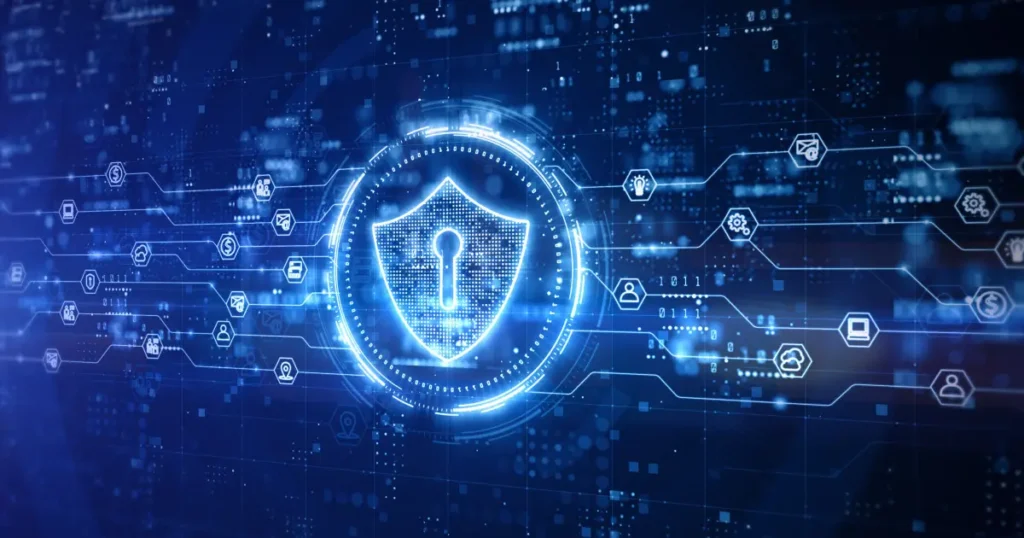Cybersecurity is a field that has gained tremendous popularity in recent years. It’s natural for many to want to dive into this area, but it requires significant effort, dedication, and motivation. If you lack the necessary drive, this field might become tedious for you. Let’s explore how you can start your journey in cybersecurity through four main categories:
- Operating System,
- Software
- Hardware
- Network
These categories are the pillars of a computer engineering curriculum. I’ll share my experiences and insights from working and learning in this sector. Sharing knowledge is crucial as it multiplies and evolves science. Now, let’s get started!

Networking
Starting with network technologies is crucial because understanding the internet and network technology forms the foundation of cybersecurity. Knowing the basics of how the internet works will help you grasp the technical aspects more effectively. A network can be defined as a system where two or more computers connect via wired or wireless communication tools, sharing software and hardware components.
Key Points to Cover in Networking:
- Basic Definitions: Understanding what a network is and how it functions.
- Importance in Cybersecurity: Networks are essential in cybersecurity, with roles such as network engineers and specialists focusing on this area.
- Certifications: Aim for knowledge equivalent to CCNA and CCNP certifications from Cisco. These are internationally recognized certifications that can guide your learning process.
- Simulation Tools: Use tools like Cisco Packet Tracer, Boson NetSim, and GNS3 for practical lab experiences. These tools will help you create lab environments and reinforce your learning.

Software
Software knowledge is critical in cybersecurity. The programming language Python is widely used in this field due to its powerful capabilities and ease of learning compared to languages like C or C++. With Python, you can write and develop your own tools and projects, such as exploit scripts.
Key Points to Cover in Software:
- Popular Languages: Python is a versatile language for cybersecurity, enabling you to write exploits and automate tasks.
- Learning Resources: Utilize documentation, video tutorials, and online platforms like “Python istihza” for learning Python.
- Exploits: Understand different types of exploits like Local Exploits, Remote Exploits, DOS-Exploits, Command-Execution-Exploits, SQL-Injection-Exploits, and Zero-Day-Exploits.

Hardware
Understanding hardware is also important in cybersecurity. While my personal experience with hardware might be limited, I can highlight its significance through social engineering examples. For instance, an attacker could use a USB device to spread malware, demonstrating the importance of hardware knowledge in preventing such attacks.
Key Points to Cover in Hardware:
- Basic Components: Familiarize yourself with key hardware terms like RAM, ROM, HDD, and SSD.
- Practical Example: Consider a scenario where malware is spread via a USB device, as in the Stuxnet example. Understanding the hardware aspects can help prevent such attacks.
Operating System
Operating systems are crucial in cybersecurity. Popular systems include Microsoft Windows, macOS, Linux, Android, and UNIX. Knowing how these systems operate and how secure they are is essential.
Key Points to Cover in Operating Systems:
- Security Awareness: Learn about vulnerabilities like the Windows “EternalBlue” exploit, which compromised user data.
- Linux Proficiency: Linux is widely used in cybersecurity. Learn the basics of Linux, such as package systems, terminal commands, and Linux security practices.
- Virtual Environments: Use virtual machines (VMware, VirtualBox) to practice and learn different operating systems. Installing a Linux distribution like Ubuntu on your PC is highly recommended for hands-on experience.
Continuous Learning and Practice
Cybersecurity is a field that demands continuous learning and staying updated with new threats and technologies. Engage in projects, participate in CTF (Capture The Flag) events, and practice on different platforms to enhance your skills.
Conclusion
Entering the world of cybersecurity requires a strong foundation in various technical areas. By following this guide and continuously learning, you can build a robust knowledge base. Remember, knowledge grows when shared. Keep your motivation high, and keep learning. Take care and see you in the next blog post!
test